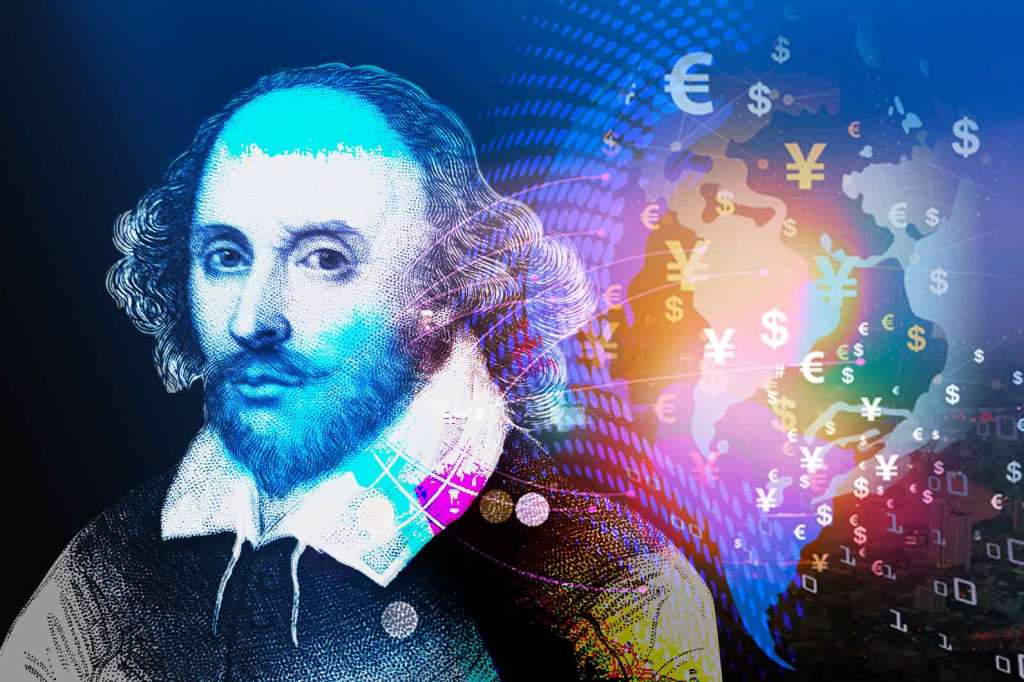
The term ‘monetary policy’ refers to how governments and central banks affect the economy through monetary levers such as interest rates and the money supply. ‘Fiscal policy’, in contrast, concerns how and when to tax people and businesses, and how and when to spend public funds.
Across the major capitalist economies, there is a strong consensus about the theoretical basis for monetary and fiscal policy, and how the associated policy levers should be used. That consensus is firmly based on mainstream neoclassical economics.
‘Modern monetary theory’ (MMT), however, has emerged as a challenge to that consensus.
MMT consists of observations about and prescriptions for monetary and fiscal policy in advanced, ‘monetarily sovereign’ countries such as the US, the UK, Japan, Sweden, Canada, Australia and New Zealand.
(Unlike a country in a currency bloc, or one that has adopted a foreign currency, a monetarily sovereign country has and controls its own currency and central bank.)
Thanks to popular books such as Stephanie Kelton’s The Deficit Myth, MMT is receiving a lot of attention in the media and is attracting supporters among politicians and in public policy circles.
MMT has also attracted academic supporters, most of whom are from smaller or less august universities, perhaps because those scholars are less invested in mainstream economics, or they have a greater licence to adopt new theories and methods. A lot of MMT advocates are working outside the academy altogether.
What the advocates have in common is a sense that, in the standard neoclassical formulation of macroeconomic policy, something is off.
A core pillar of MMT is the idea that, within reasonable limits, a monetarily sovereign country can spend more than it taxes, and it can pay for the resulting budget deficit by creating money rather than by borrowing. Such money creation is desirable, according to MMT, if it moves the economy towards full employment without creating excessive inflation.
Instead of a stringent fiscal budget constraint, therefore, MMT pictures monetarily sovereign countries as facing a potentially less stringent inflation constraint. Proponents of MMT urge governments to use this greater fiscal headroom to fund such things as universal job guarantees and generous transfer payments. (MMTers still acknowledge that national taxation is important, especially to impart value to a monetarily sovereign country’s currency.)
The debate between the MMT camp and mainstream economists is a fascinating case study in disciplinary dynamics. With notable passion and even vehemence, prominent economists have criticised both the precepts and the prescriptions of MMT, labelling it biased, banal, unoriginal, unsubstantiated, incoherent, naive, dangerous and ‘dead wrong’.
Larry Summers called MMT a new incarnation of voodoo economics. Paul Krugman has complained that MMT proponents are a moving target — like the players in Calvinball (from the comic strip ‘Calvin and Hobbes’) who whimsically change the rules mid-game. John H. Cochrane likened Stephanie Kelton’s logic, facts and language to (brittle and circular) ‘pretzels’.
Some of the criticism has been unfair, some of it ill-tempered. For Shakespeare scholars, this all looks very familiar.
*
The field of Shakespeare studies is bifurcated into two groups: orthodox ‘Stratfordian’ scholars who accept that William Shakespeare of Stratford-upon-Avon wrote the plays and poems that were published under his name; and ‘heretics’ who believe one or more hidden authors were responsible for the Shakespeare oeuvre.
Writing under the banner of the ‘Shakesperean authorship question’, heretics have put forward a wide variety of ‘true author’ candidates.
Looked at alongside the MMT debate, the disciplinary dynamics are strikingly similar, as is the psychology of the competing proponents. We see the same polarisation, the same adoption of entrenched positions, the same name-calling and the same caricaturing and mischaracterization of each other’s positions.
As with the MMT debate, most of the Shakespeare ‘heretics’ are from smaller and less prestigious universities, or from outside the academy altogether.
The mainstream ‘Stratfordians’ dismiss the heretics with enthusiasm, and yet the heretics for the most part come from a position of good faith, and they have joined the cause of heresy because they have found or intuited that, in the dominant Shakespearean paradigm, once again something is off.
The something in this case is an incorrect characterisation by previous orthodox scholars of how Shakespeare lived and worked, leading to an over-claiming of his authorial achievement. The perceived arrogance and narrowmindedness of some prominent orthodox scholarship has helped to further alienate the heretics.
Despite this strong taking of sides, however, there is a way out of the bind.
*
I wrote Shakespeare’s Library (2018) as a way to engage with and potentially soften the divisions in the field of Shakespeare studies.
Shakespeare must have owned books and he must have produced a large quantity of manuscripts and other documents. Oddly, however, the number of books and documents with demonstrably Shakespearean provenance is extremely small. The fate of Shakespeare’s library of books and manuscripts is unknown.
The book’s subtitle, ‘Unlocking the greatest mystery in literature’, referred to the fact that the size of Shakespeare’s personal library grows and shrinks depending on how we answer the verboten question: who wrote Shakespeare?
My background in Shakespeare studies is entirely orthodox, as is my perspective. To write Shakespeare’s Library, I ventured gently and warily into the terrain of heresy. But I also looked at the heresies with an open mind and, as much as possible, on the heretics’ terms.
My aim was to provide a framework and toolkit for reconciling orthodox and unorthodox scholars and to define a robust pathway towards an enhanced orthodoxy. The pathway was built on concrete evidence, transparent logic, a more accurate characterisation of Shakespeare’s authorial achievement, and a more accurate picture of the early-modern book world, in which his plays and poems were published.
Instead of a detached, infallible genius, Shakespeare was a workaday author, happy to borrow and steal from prior authors and to collaborate with contemporary ones. After Shakespeare and his collaborators had done their work, unnamed editors further enhanced the resulting texts, and in some instances, cavalier publishers put Shakespeare’s name on works he did not write.
Shifting the Shakespeare debate is difficult, as is changing the disciplinary dynamics. But in a modest way, the book has been influential. Key orthodox writers such as Stephen Greenblatt, Farah Karim Cooper and Chris Laoutaris embraced the book and the picture of Shakespeare that it painted. There is a direct correspondence, for example, between Cooper’s image of Shakespeare in The Great White Bard (2023) and the one depicted in Shakespeare’s Library. The book also influenced several orthodox monographs that engaged with Shakespearean print production, his use of sources and his relationship with Ben Jonson.
But in the context of resolving the authorship debate, the book’s most important impact has been on the heretics, with whom I have an ongoing and multifaceted conversation. Via early-modern print production and the role of Shakespeare’s editors and collaborators, the book has influenced authorship scholarship by offering a robust resolution to the problem that the secret-author theories were meant to solve. For heretics and the heresy-curious, the book has provided a pathway back to solid ground.
Is something similar possible in the case of MMT?
At Sydney and Stanford universities, and then at McKinsey & Co. and as a financial inventor, Ian Shepherd spent decades analysing the foundations of the global financial system. Ian’s ‘Alice’ financial market was designed to allow settlement-risk-free trading in contingent state securities (also known as ‘Arrow Debreu securities’) and therefore to empower households and businesses to take fair bets (without the mediation of banks) as a way to manage important risks such as those relating to the climate, interest rates, energy prices and retirement.
To build the Alice market, Ian had to understand the monetary system at the deepest level, so he could understand and manage relevant risks, and so he could ensure the Alice market made use of suitably high-quality collateral.
Ian Shepherd’s work in the ‘financial basement’ enabled a deep elucidation of the workings of the global financial system and key financial markets. This elucidation extends to the fundamental mechanics of the monetary system, the role of bank reserves and the sources of money creation.
I first met Ian Shepherd in 2019, and since that time we have collaborated on several articles on the wider implications of his invention and discoveries. This work has articulated an understanding of money and banking that is directly relevant to the MMT debate and is quite different from the standard neoclassical picture.
In my 2024 book ‘Alice’ and in an April 2024 extract in The Guardian, I set out some of the principal implications for public policy and the financial system.
Alice lands in a position that overlaps with and encompasses a lot of the key findings and concerns of MMT. Ian Shepherd and I concur with the core MMT proposition that governments of monetarily sovereign countries can spend without going to public markets; and they can run up overdrafts with their own central bank, within an inflation constraint. We agree with MMT, moreover, on the significance of the interface between the political system and the monetary system.
Despite those commonalities, however, there are also important differences.
MMT has a strong ‘normative’ character — it is concerned with how the world should be — and it takes macroeconomic policy as its starting point. Alice, in contrast, approaches economics and finance in a non-normative way, and from a different starting point: the deep foundations of the financial system.
For large countries like the US and Japan, inflation is the main constraint on money creation. But for smaller countries like Australia, the exchange rate is also important, as excessive spending can cause a currency depreciation — potentially a quick, unexpected and substantial one. Exchange rate impacts in smaller countries are not prominent in MMT, but they are important in Shepherd’s and my work.
Another difference: we agree with MMT in relation to money creation, but MMT does not share our emphasis on the importance of money destruction — which occurs when taxes are paid, when loans are repaid, and (temporarily) when governments borrow.
Shepherd and I emphasise the importance of thinking about macroeconomic policy from the point of view of the consolidated government — i.e. the government plus the central bank — as a single economic entity.
(We further contend that a consolidated accounts analysis should encompass the balance sheet positions of the consolidated government and the private sector, reflecting the reality that taxpayers own the consolidated government, and the financial liabilities of the consolidated government are financial assets of the private sector.)
And a final difference: in contrast to MMT’s focus, our work emphasises the need to redesign the financial system for the benefit of society. Such a redesign could include the creation of credit-risk-free depository institutions and other specialised entities, such as lending-only banks, and ones that serve specific sectors or regions.
In Alice we describe a transition process that involves a publicly owned ‘tax bank’ and a new, government-backed e-coin that would help rebalance bank lending towards more productive purposes and away from the current profile that tends to inflate asset-price bubbles and create inter-generational inequities.
*
As with most Shakespeare heretics, the advocates of MMT are well-intentioned and committed to methodological rigour. Both groups have rightly detected gaps and elisions in dominant theories.
In the case of MMT, proponents have noticed in neoclassical economics a fundamental mischaracterisation of the nature of money. Very surprisingly, neoclassical economics largely ignores money (except as an alternative to barter) and it fails to capture the real mechanics of the banking system. Today’s dominant economic paradigm is based on an intuitive but illusory picture of money and banking.
Basing such an influential paradigm on an illusion is extremely dangerous, but one part of the illusion is useful. The commonplace analogy of the government as like a household (oikos, the origin of ‘economics’) operating within a budget constraint serves as a break on public expenditure. If that analogy is discarded, new institutions (such as joint monetary and fiscal authorities) will need to be created to guard economies against unlimited spending and therefore runaway inflation and depreciation.
MMT does not focus on the need for such new institutions nor does it foreground the value of a consolidated view of governments plus central banks.
An even more important difference: MMT is a theory whereas our work is a direct analysis and description of how money and banking actually work. This is not to disparage theory; theorising has its place, but MMT can usefully be thought of as a provisional stage in reaching a more accurate and complete understanding of the modern financial system and all the things that flow from that, including bank regulation, international financial flows and the design of monetary and fiscal policy.
As with Shakespeare’s Library, Alice encompasses both convention and heresy, and it provides a pathway for the heretics to move towards an enhanced orthodoxy. The disciplinary dynamics are certainly similar, but compared to resolving the Shakespeare Authorship Question, the stakes in the MMT debate — for scholarship and ultimately for economies and households — are infinitely higher.
READ MORE:
The financial world looks very different when viewed from the basement

